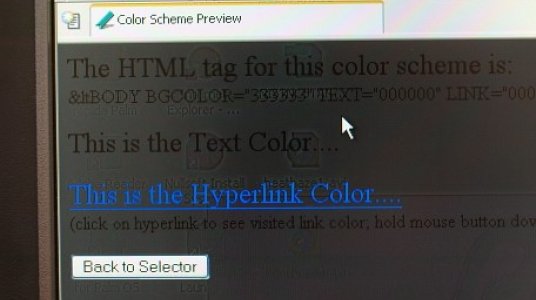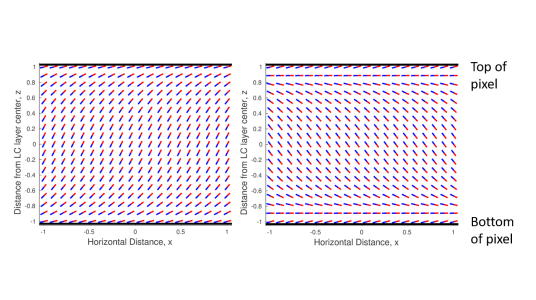New Models for Ion Transport in Liquid Crystal Devices
-
Researcher: Oliver Whitehead
-
Industrial Supervisor: Leo Weegels
Background
Liquid crystal (LC) devices, and specifically liquid crystal displays, form a continually growing multi-billion-pound industry which has garnered an increased level of academic interest in recent years. Liquid crystals are a classical example of anisotropic materials, which combine the fluidity of liquids with long-range orientational order. This directional response to light and electric fields makes them popular working materials for display applications. In our research into LCs we aim to model an LCD pixel and understand how the LC molecules inside the pixel respond to an applied electric field. This will aid in the development and optimization of new and existing LCD technologies. The problem we are interested in is the phenomenon of image sticking. This is when a temporary remnant of a previously displayed image is visible on the screen after switching the displayed image (see Figure 1). This effect can occur when an image is kept fixed on the display for too long, similar to the image burn-in problems that used to effect old CRT displays. It is suspected that image sticking in LC devices is caused by ion impurities within the liquid crystal. These ions can build up during device operation so understanding the physical connection between ion transport and such behaviour will help in reducing undesirable effects.
Figure 1: An LCD device experiencing image sticking.
Progress
To best understand the most important physical effects, we wish to find the simplest possible model which can predict image sticking effects. To do this we reduce the problem to a 1-dimensional problem across the depth of an individual pixel and make simplifying assumptions such as assuming the LC molecules act as simple, polar rods. The resulting model describes the reorientation of liquid crystal molecules through an energy-minimization approach where the molecules balance energetically preferring to align with the applied electric field and with neighboring LC molecules. We combine this with a drift-diffusion model for ion motion. This model incorporates the ions’ flow due to the electric fields across the device and spreading out due to diffusion. Using this model, we can predict LC molecule layout and ion concentrations over time, find the physical parameters which best govern the speed of ion build up and the significance of ion presence and identify the existence of undesired stable steady states. For example, in Figure 2 we show some outputs from these simulations. We observe two predictions of a stable LC molecule layouts which are both achievable at higher voltages. The right-most layout however yields a less bright pixel and corresponds to an industrially known pixel defect called reverse twist.
Figure 2: Example simulated layouts of liquid crystal molecules across a pixel.
Future Work
Our next step is to compare the predictions of these results against experimental data. This will allow us to identify where the model can be improved and assess its usefulness as a predictive tool for physical parameters. For future work, there are several potentially significant physical effects we wish to include to establish their importance. For example, it is possible for more ion impurities to be generated over time by the breakup of other molecules. Additionally, we are currently neglecting more complex ion effects such as ion-ion interactions, local distortion effects they can have on the LC orientation and development of a shell of LC molecules which become attracted to ions and drift with them. These effects are sub-dominant effects but they may lead to qualitative differences in ion dynamics and image sticking. Further, we may extend the model to higher dimensions to model the long term lateral drift of ions across the width of pixels.




